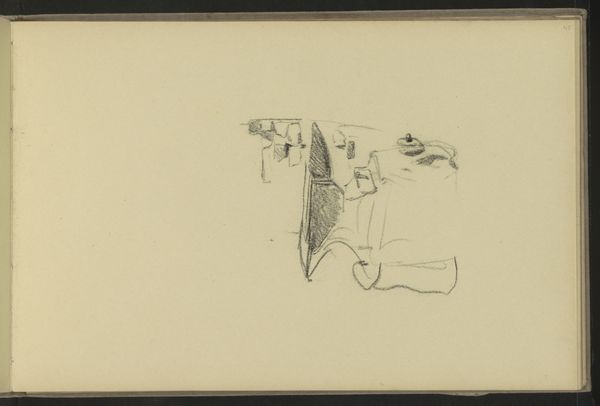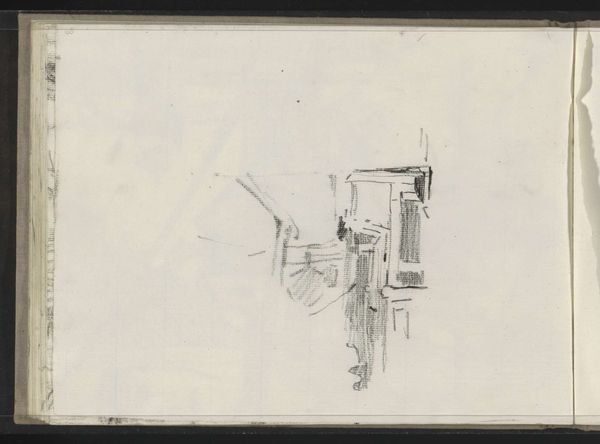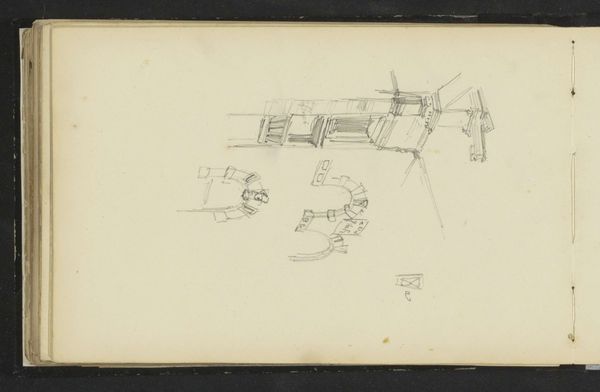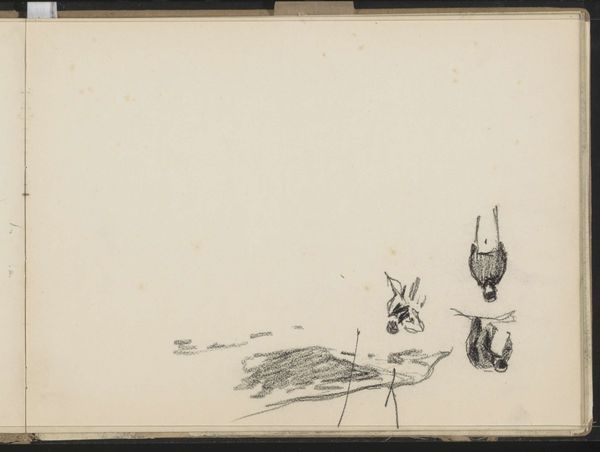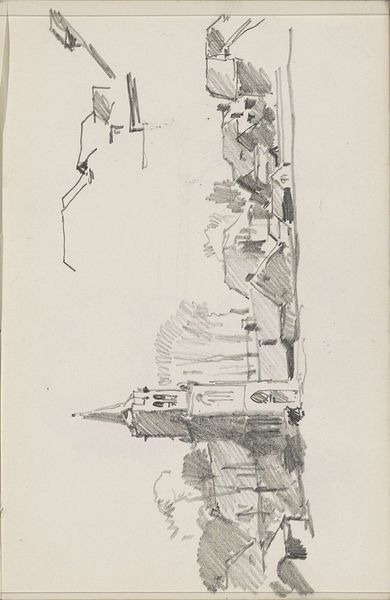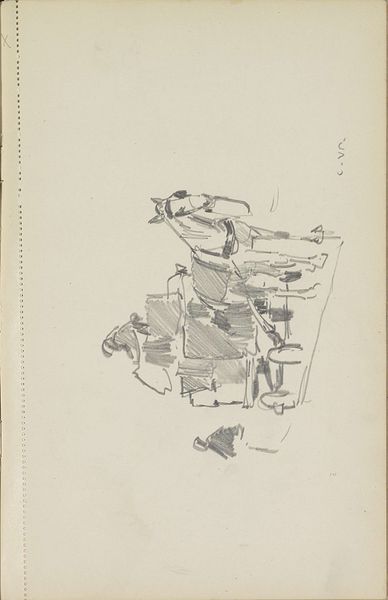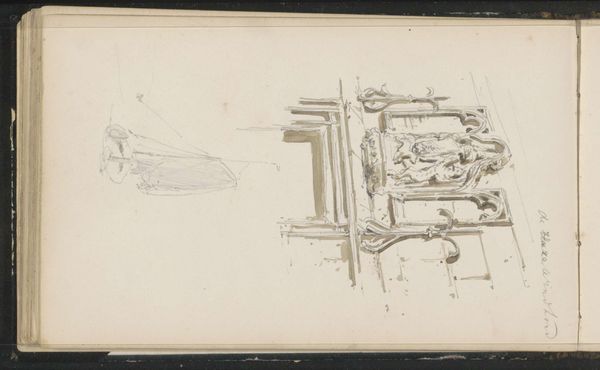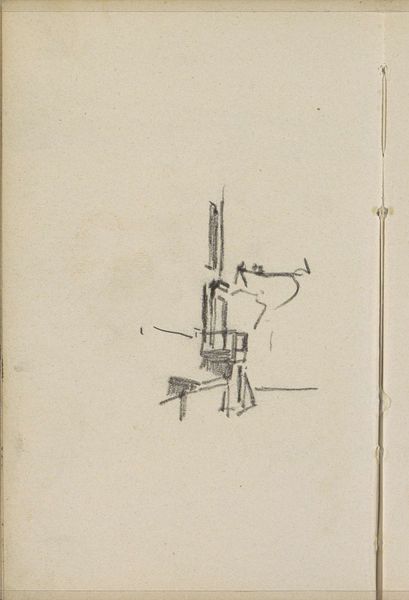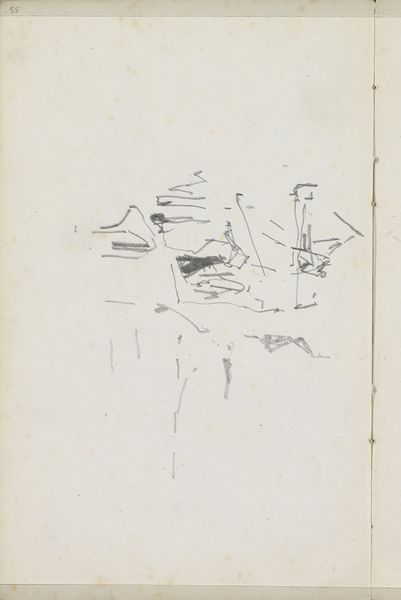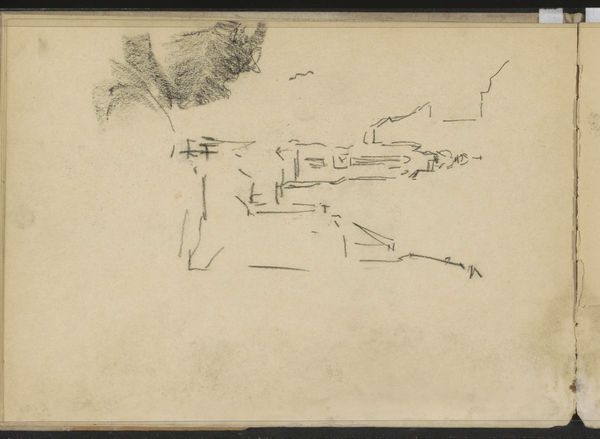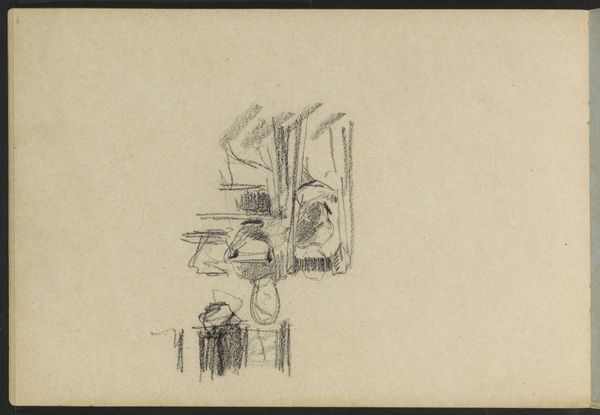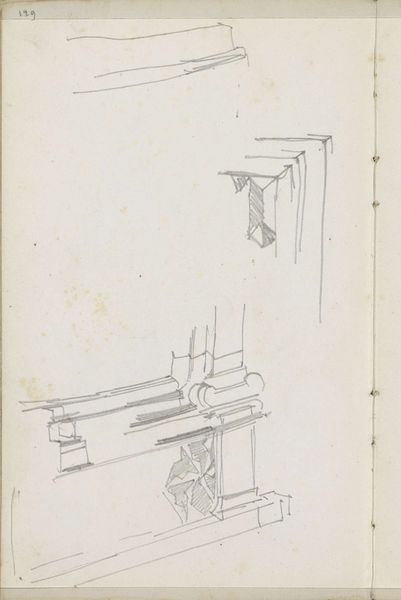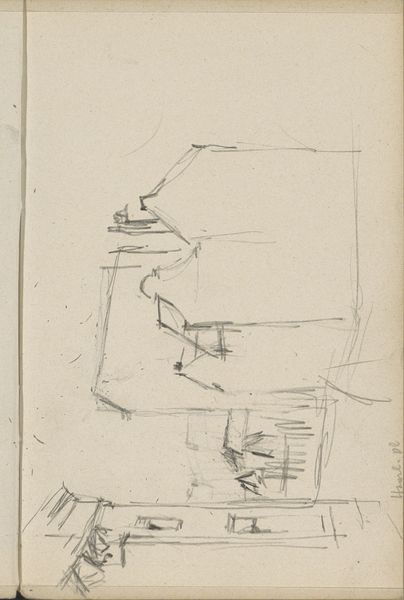
drawing, pencil
#
drawing
#
quirky sketch
#
pen sketch
#
sketch book
#
incomplete sketchy
#
landscape
#
personal sketchbook
#
sketchwork
#
ink drawing experimentation
#
pen-ink sketch
#
pencil
#
sketchbook drawing
#
cityscape
#
sketchbook art
#
realism
Copyright: Rijks Museum: Open Domain
Editor: This is Willem Witsen's "View of the Molensteeg in Wijk bij Duurstede," likely from 1906-1909, created with pencil and pen. It looks like a quick sketch. I'm curious, what strikes you about the composition? Curator: The spatial arrangement is certainly interesting. Note the linear perspective, rapidly indicated. Witsen's deployment of line, its thickness and variation, attempts to render form and volume but eschews completion. This is sketch, a study. Editor: Yes, there's a definite emphasis on lines over details, and negative space too. It's as if he's more interested in capturing the essence of the scene rather than a photographic depiction. Does that choice speak to anything? Curator: The incompleteness invites a crucial consideration. Where do you feel Witsen's attention truly rests? Observe how the more assertive lines cohere; that becomes the focal point. What relationship, therefore, exists between the sketch’s subject and its object, as presented to the viewer? Editor: I see… You’re pointing out how the lines build depth but leave so much unsaid. It is not just a quick record but an artistic choice for open interpretation and incomplete realism. Curator: Precisely. And by limiting representational content, attention is given instead to the formal aspects of spatial configuration and design. This distillation guides how we look and, perhaps more importantly, why. Editor: So, even a simple sketch encourages close analysis of visual choices and their impact. It goes beyond just documenting what’s there! Thanks, I’ve definitely gained a new perspective on looking at sketches. Curator: Indeed. By carefully observing the elements within the frame, we unlock intentions—both realized and latent.
Comments
No comments
Be the first to comment and join the conversation on the ultimate creative platform.
